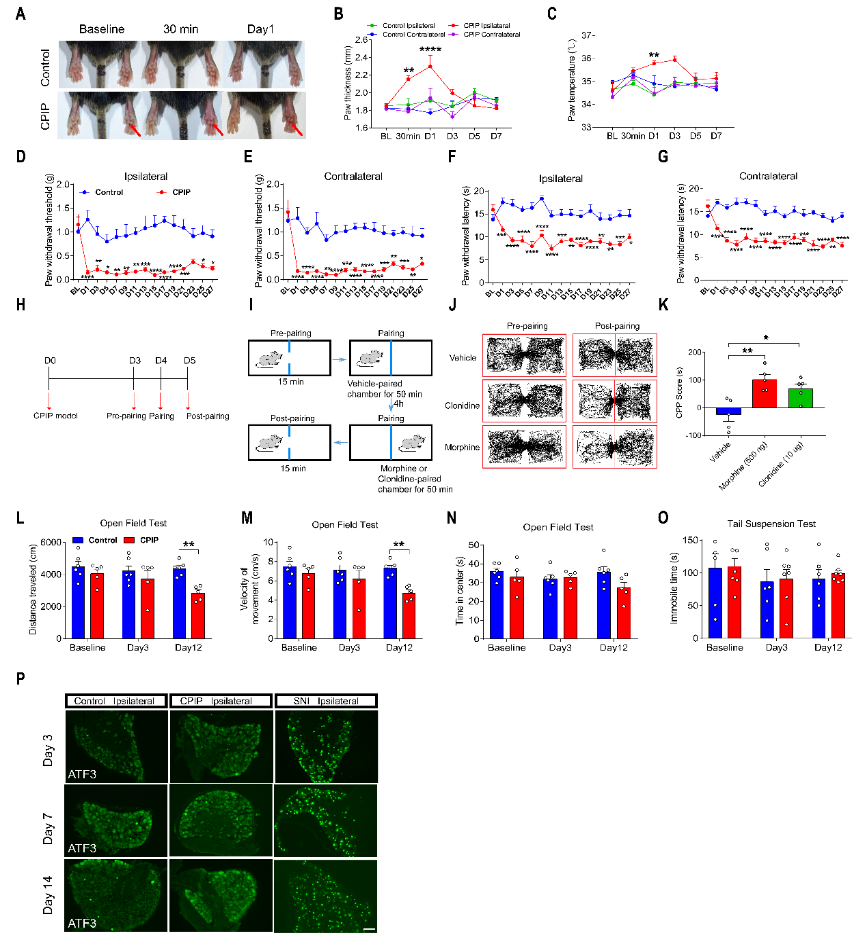中国神经再生研究(英文版) ›› 2023, Vol. 18 ›› Issue (11): 2535-2544.doi: 10.4103/1673-5374.371373
高强度游泳运动可激活脊髓中Resolvin E1-ChemR23轴减轻慢性缺血后疼痛的伤害感受和神经炎症
High-intensity swimming alleviates nociception and neuroinflammation in a mouse model of chronic post-ischemia pain by activating the resolvin E1-chemerin receptor 23 axis in the spinal cord
Xin Jia1, Ziyang Li1, Xiafeng Shen2, Yu Zhang3, Li Zhang4, Ling Zhang1, *
- 1Department of Neurology and Neurological Rehabilitation, Shanghai Yangzhi Rehabilitation Hospital (Shanghai Sunshine Rehabilitation Center), School of Medicine, Tongji University, Shanghai, China; 2Department of Rehabilitation, Shanghai Pudong Hospital, Fudan University Pudong Medical Center, Shanghai, China; 3Key Laboratory of Cellular Physiology (Shanxi Medical University), Ministry of Education, and the Department of Physiology, Shanxi Medical University, Taiyuan, Shanxi Province, China; 4Key Laboratory of Central CNS Regeneration (Ministry of Education), Guangdong-Hong Kong-Macau Institute of CNS Regeneration, Jinan University, Guangzhou, Guangdong Province, China
摘要:
体育运动可有效缓解与复杂性区域疼痛综合征1型相关的慢性痛,但是其镇痛的机制尚不明朗。最近有研究表明,特异性炎症消散因子Resolvin E1可通过结合其受体ChemR23在神经系统中参与减轻病理性疼痛。然而,RvE1-ChemR23轴是否可参与运动对复杂性区域疼痛综合征1型的镇痛作用还未得到证实。因此实验首先以后肢慢性缺血后疼痛小鼠模型模拟复杂性区域疼痛综合征1型,进而采用不同强度的游泳运动来干预慢性缺血后疼痛小鼠,发现只有高强度游泳运动才能减轻小鼠的慢性痛。同时慢性缺血后疼痛小鼠脊髓中RvE1-ChemR23轴显著下调,而高强度游泳运动可恢复RvE1及其受体ChemR23的表达。最后以shRNA沉默脊髓中ChemR23,发现高强度游泳运动对慢性缺血后疼痛小鼠的镇痛作用以及脊髓背角小胶质的抗炎型极化现象被逆转。提示高强度游泳运动可通过介导脊髓内源性RvE1-ChemR23轴对慢性痛产生镇痛作用。
https://orcid.org/0000-0002-8308-6553 (Ling Zhang); https://orcid.org/0000-0002-4219-5702 (Xin Jia)






